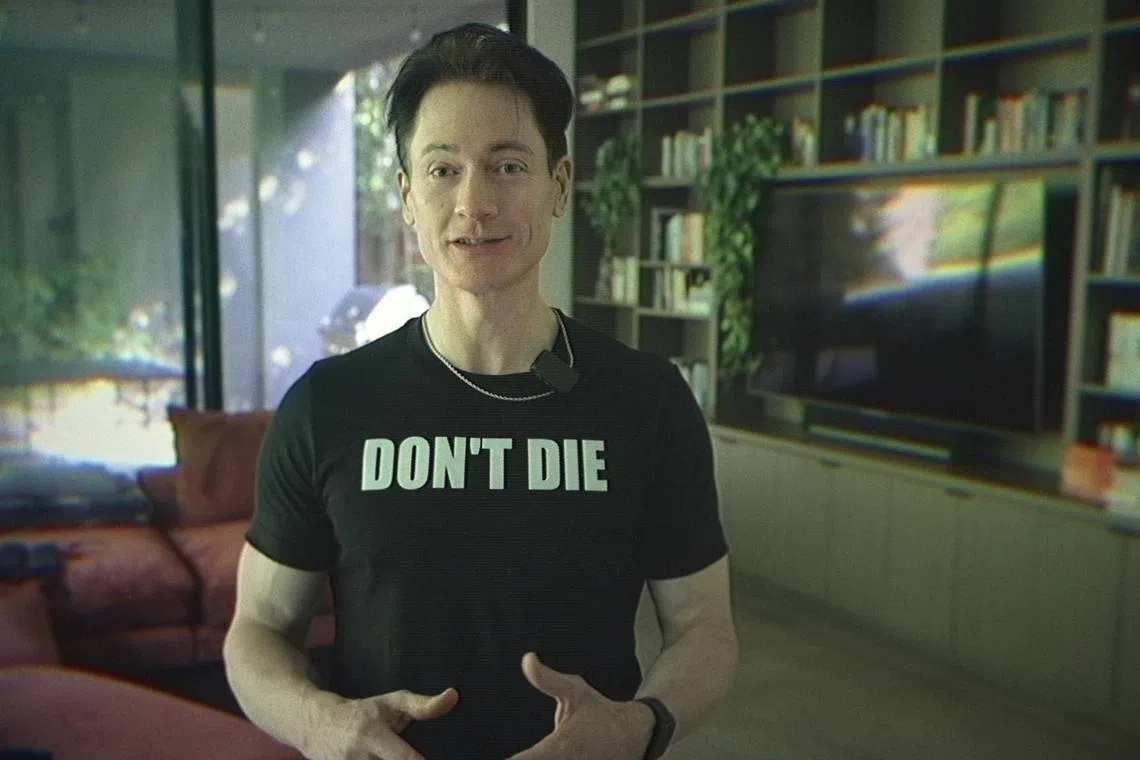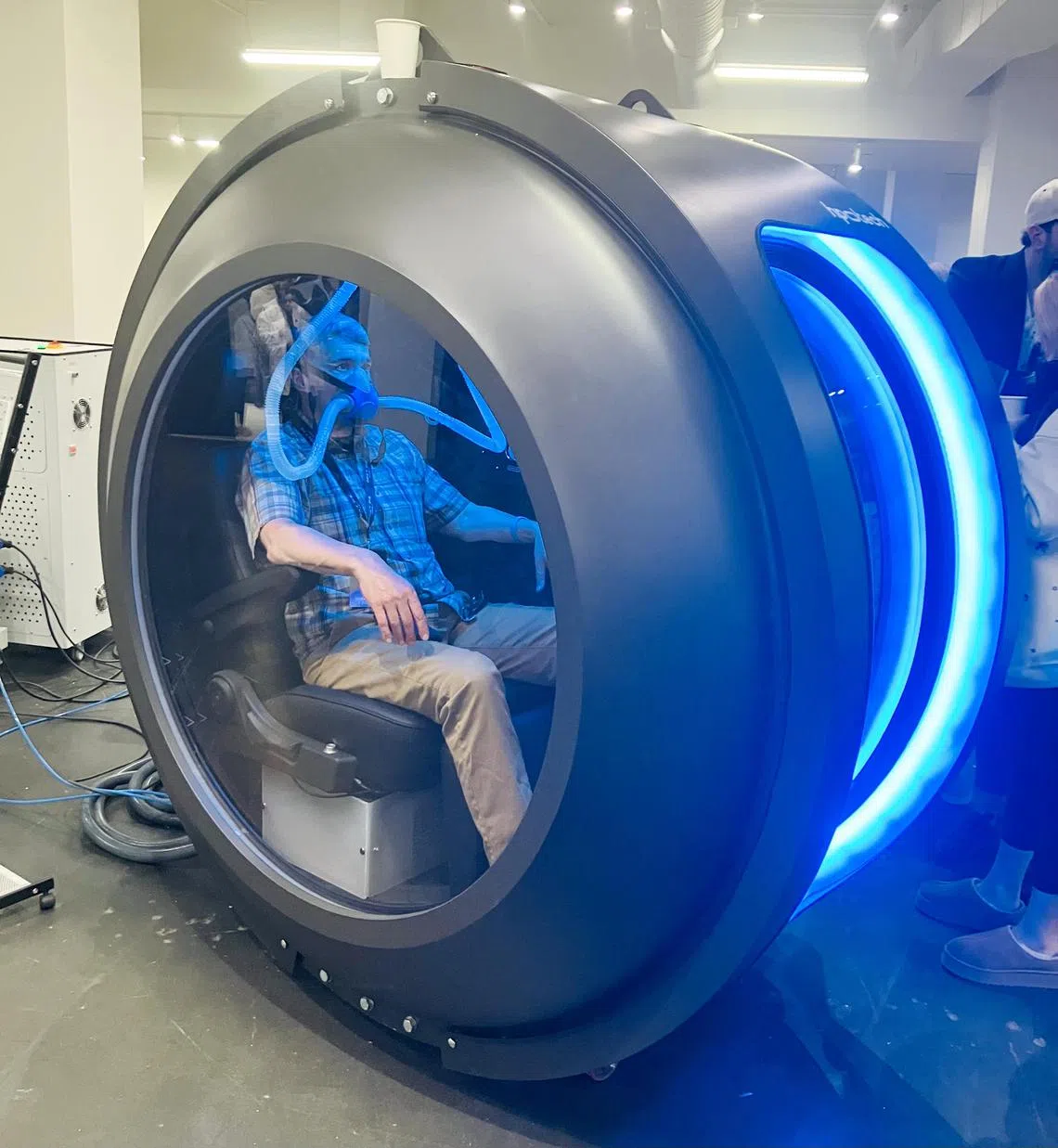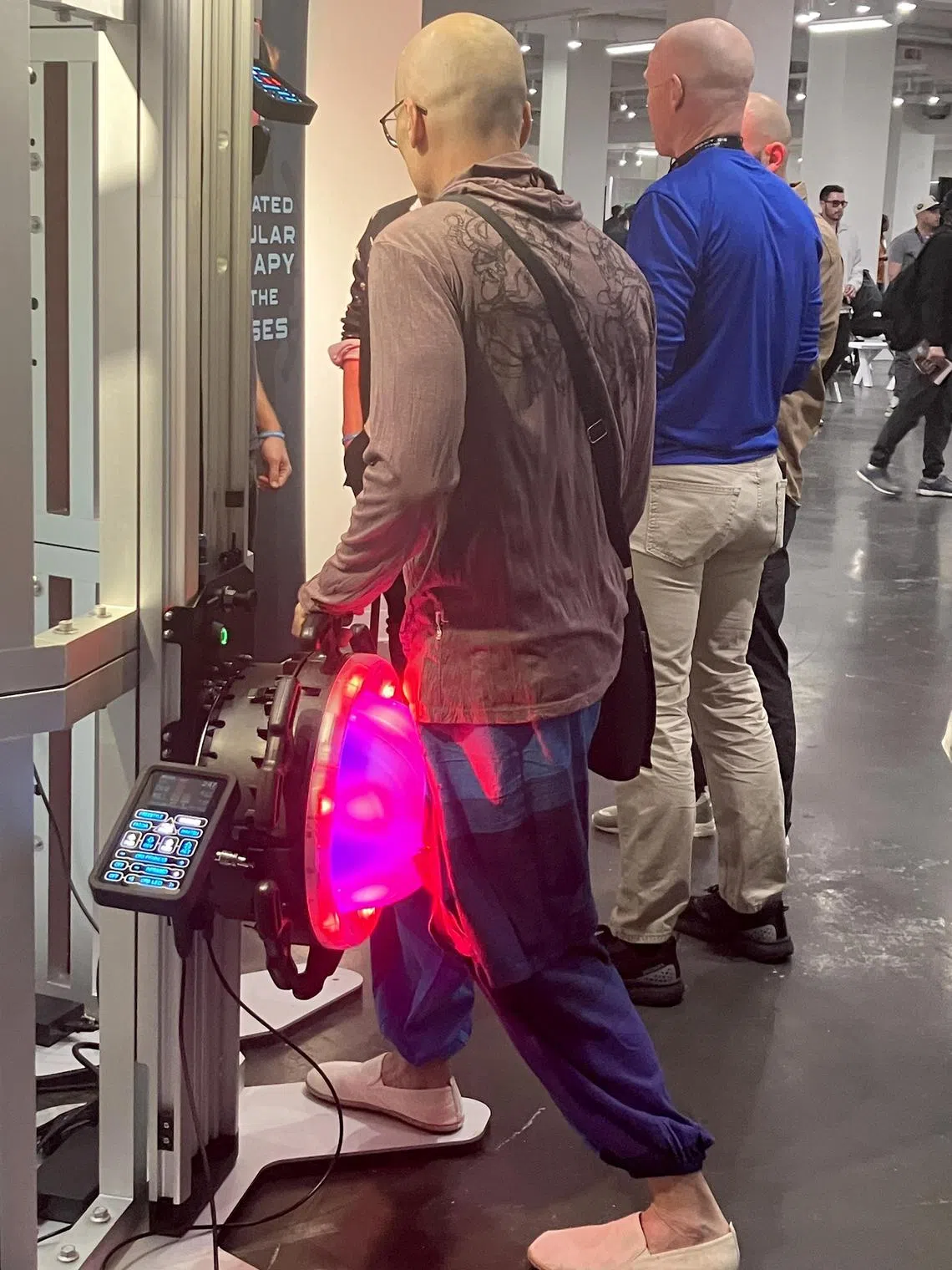Does Bryan Johnson’s Don’t Die Summit really teach you the secrets to living longer?
Sign up now: Get ST's newsletters delivered to your inbox

More than 1,200 attended the event, each paying between US$249 and US$1,799 for a programme that includes talks by the anti-ageing guru.
PHOTO: NETFLIX
Follow topic:
LOS ANGELES – The Don’t Die Summit, a longevity conference hosted by anti-ageing guru Bryan Johnson, begins with a coffee- and juice-fuelled dance party at 10.30am.
And the American technology entrepreneur – famous for spending US$2 million (S$2.7 million) a year on an experimental programme to become more youthful – leads this wholesome rave, stripping off his T-shirt and going bare-chested on the makeshift dance floor.
It is an unconventional start to what is, effectively, a consumer health and biomedical conference.
But for the 47-year-old, it is very much on brand, in keeping with his mission to reverse ageing and, ultimately, defeat death.
Held on Jan 18 in Los Angeles, this was the third Don’t Die Summit, the first two having taken place in San Francisco and Singapore in September 2024.
More than 1,200 attend the sold-out event, each paying between US$249 and US$1,799 for a day-long programme that includes talks by Johnson and booths showcasing the latest anti-ageing products and technologies.
These range from red-light devices promising better skin and hair, to a service that harvests stem cells for use in future regenerative therapies.
But Johnson is also using these summits to grow the community that has rallied around his cause – the most devout of whom follow at least part of his elaborate regimen, which covers diet, supplements, exercise and other interventions.
He is also appealing to a broader audience interested in simply becoming healthier, many of them discovering the world of “biohacking” – or self-experimentation to improve health and performance – for the first time.
“Today is really about us becoming friends,” he tells them. “There are, of course, things to learn about health and longevity, but we already know what to do – it’s really about the ability to do the things we want to do.”
“And with friends, life is twice the joy and half as hard,” adds Johnson, who made his fortune selling a digital payments company for US$800 million in 2013 and is the subject of the Netflix documentary Don’t Die: The Man Who Wants To Live Forever.
Most attendees are from Los Angeles or neighbouring areas. They range from seasoned biohackers to the newly curious; from athletic 20somethings to an octogenarian in a wheelchair.

Attendees using a massage device that claims to reduce injury recovery time. It is among the anti-ageing technologies and therapies on display at the Don’t Die Summit in Los Angeles.
PHOTO: ALISON DE SOUZA
Mr Philip Dodge, 59, is one of the more advanced.
Like Johnson, he has done both stem-cell therapy and exosome therapy, which use human stem cells or products secreted by them to treat or prevent diseases and conditions.
He has also taken the controversial drug rapamycin, which has been shown to extend lifespan in animals.
And he believes this may be one reason he has no problem keeping up with his 20-year-old son and six-year-old daughter.
“I have more energy than most teenagers,” says Mr Dodge, a medical entrepreneur.
A frequent skier, he has also seen his knee injuries heal quickly. “I’ve done stem cells three times and I think it’s helped. I just feel very youthful because of that.”
Mrs Charlie Lowe has been a biohacker for just three years, but she is all in.
The 56-year-old financial adviser has purchased her own infrared sauna, red-light therapy panel and hyperbaric oxygen chamber – therapies thought to accelerate healing through different mechanisms.

A hyperbaric oxygen chamber is among the anti-ageing technologies and therapies on display at the Don’t Die Summit in Los Angeles.
PHOTO: ALISON DE SOUZA
“I’m very much a believer in well-being and longevity, and I like to optimise everything I can,” she explains.
She also believes Johnson takes an objective, evidence-based approach in what he recommends. “He’s the real deal, and you have to be careful because there are a lot of imposters.
“There are also a lot of products and it can get very costly,” adds Mrs Lowe, who estimates that she spends between US$50,000 and US$100,000 a year on her health.
Mr Jeff Chiang, 34, and his friend Aaron Kuan, 33, are not quite at that level yet, but have embraced some of Johnson’s more straightforward recommendations.
Mr Chiang, an accountant, found Johnson on YouTube and Instagram a few years ago and “liked his message on things like getting more sleep, exercising and eating healthy”.
Mr Kuan, who works in the jewellery business, does not take any of the dozens of supplements Johnson recommends.

Attendees using a massage device that claims to reduce injury recovery time. It is among the anti-ageing technologies and therapies on display at the Don’t Die Summit in Los Angeles.
PHOTO: ALISON DE SOUZA
He is, however, a fan of red-light therapy, which he has found “pretty useful for things like wound-healing and relaxation”.
“And I’m here to find out what else I can incorporate into my daily life to help me improve my performance.”
But the two are more cautious when it comes to the more esoteric elements of Johnson’s protocol – including his infamous “penis shockwave therapy”, which uses sound waves to stimulate blood flow in an attempt to “rejuvenate” the organ.
“If I had to be one of the first beta testers, no thank you,” says Mr Chiang, laughing.
“But once more medical testing and research have been done, then yes, absolutely.”

